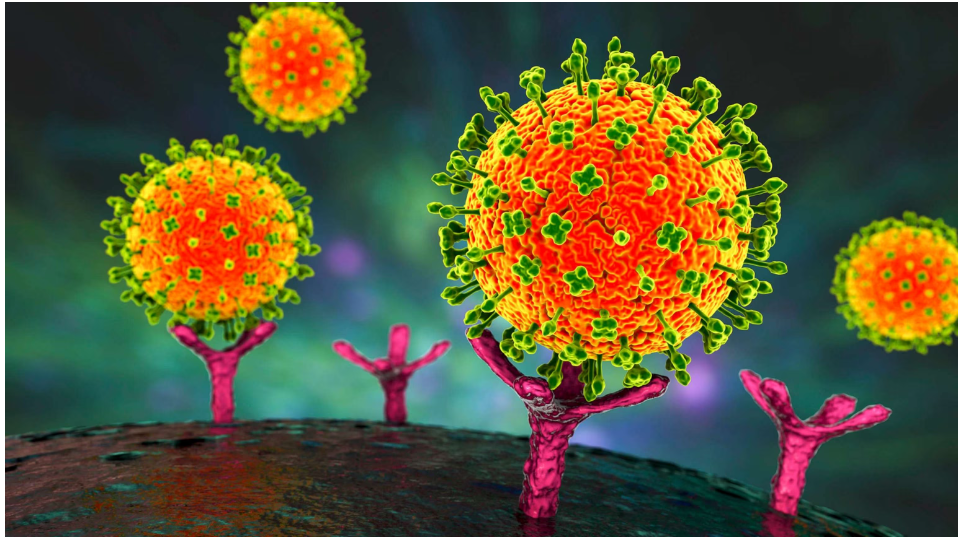What to know about Nipah virus amid outbreak in India
What to know about Nipah virus amid outbreak in India
There has been an outbreak of the rare but potentially dangerous Nipah virus in Kerala, a state in southern India, with at least two deaths associated with it, according to local reports.
Health officials in Kerala have closed schools and offices, and hundreds of residents are being tested.
Although there are no specific cures for the Nipah virus and it has a high mortality rate, scientists said it is highly unlikely that the virus would cause a worldwide catastrophe and that it serves as a reminder of how degradation of habitat has caused animals to spread diseases to humans.
What is Nipah virus ?
The Nipah virus is a zoonotic illness, which means it predominantly affects animals but can also transmit to humans.
According to the Centers for Disease Control and Prevention, the disease was originally identified in 1999 after pigs and people in Malaysia and Singapore were both infected by it.
Fruit bats, sometimes known as flying foxes, are the primary carriers of the virus, which can transmit either directly or indirectly through contact.
“People can become infected if they have close contact with an infected animal or body fluids such as, for example, the fruit bat saliva on a fruit, and then it flies off and then a person eats the fruit,” Dr. Diana Finkel, an associate professor of medicine in the division of infectious disease at Rutgers New Jersey Medical School, said according to ABC News.
Being in close proximity to or coming into touch with an infected person’s bodily fluids can also cause the virus to transfer from one person to another.
What are the symptoms of Nipah virus?
Typically, symptoms start appear between four to fourteen days following exposure. Fever is the most typical symptom, followed by headache, cough, sore throat, breathing problems, and vomiting.
Because the virus’s early symptoms match those of many other ailments, diagnosing it can be challenging, according to the Centers for Disease Control and Prevention.
Severe symptoms from the virus might include confusion, drowsiness seizures, or encephalitis, which is an infection of the brain. The CDC states that these can develop into a coma in 24 to 48 hours.
According to the federal health service, deaths occur in 40% to 75% of cases. It has been shown that survivors experience some long-lasting alterations, such as ongoing convulsions.
What are the treatments or cure for the Nipah virus?
The only available treatment for the Nipah virus at the moment is supportive care, which includes rest and hydration.
There are now being developed remedies, according to experts. One of these is a monoclonal antibody, which is an immune system protein made in a lab to resemble the antibodies the body naturally makes to combat viruses.
According to Finkel, the medication has already finished phase I clinical trials and is currently being used compassionately.
Remdesivir, an injectable drug used to treat COVID-19, is also being researched for its potential benefits. Remdesivir has been shown to be effective in treating nonhuman primates infected with the Nipah virus.
What is the probability that the Nipah virus will spread?
Although anything is possible, practitioners say it’s extremely improbable that the outbreak in India will spread globally.
Despite the outbreak in India, there has been little person-to-person transmission.
“The world is small, but the likelihood that somebody’s infected, or an infected fruit bat with Nipah virus would be here, right now, is very unlikely,” Finkel said.
According to her, it’s frequently because proper, routine precautions were not taken, including not using gloves or masks, that patients in hospital settings were exposed.
According to experts, the outbreak serves as a warning about the potentially disastrous consequences of habitat loss and climate change and may increase contact between afflicted animals and people.
“If you take this current outbreak in Kerala, as an example, you have to think about why are fruit bats that harbor this Nipah virus, why are they coming into contact with people?” Dr. Peter Rabinowitz, director of the University of Washington Center for One Health Research, told ABC News. “What is changing in terms of the movement of the bat populations? Are they leaving [a] habitat where there were not very many people? Are they now spending more time close to people?”







